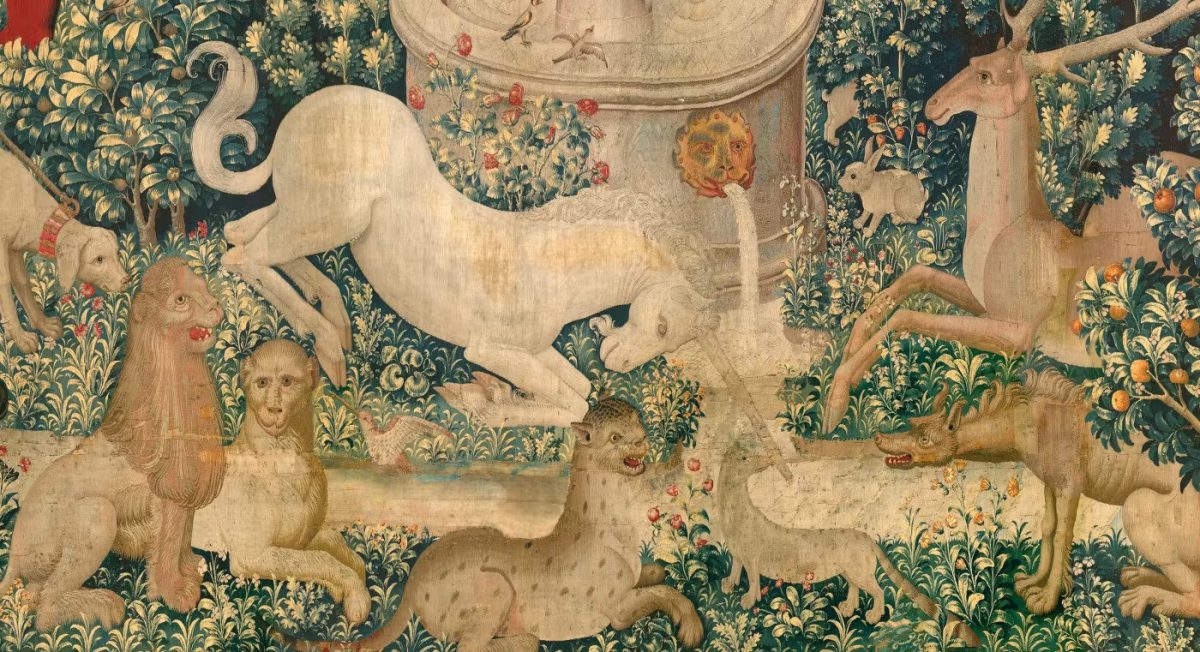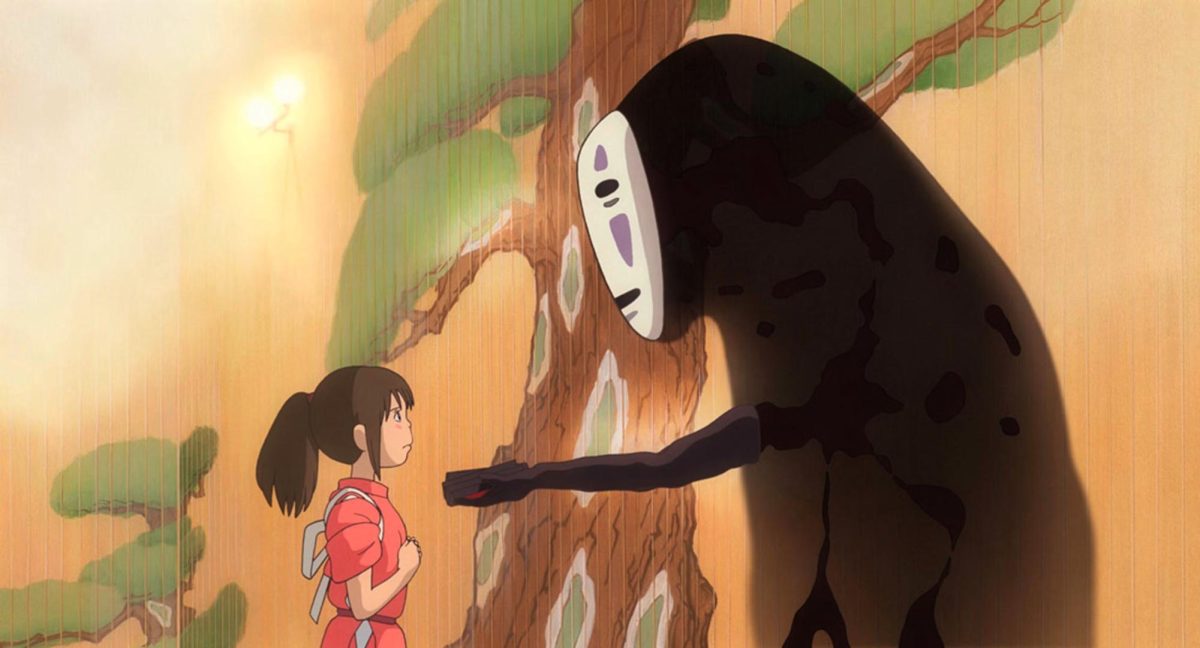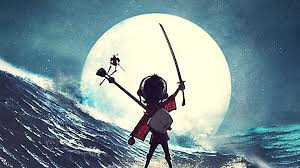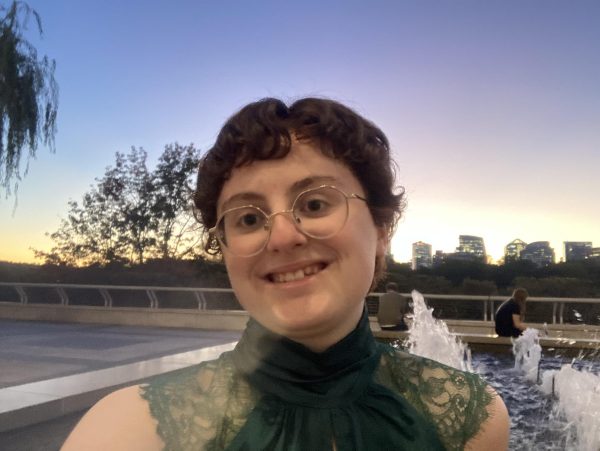This year, the Upper School winter play is “The Caucasian Chalk Circle,” a 1948 Brechtian epic theater production. Because the performance dates are coming up (December 15 at 7 PM and 16 at 2 PM and 7 PM), it is the perfect time to do a deep dive into the themes sprinkled throughout the show and why they still matter to us nowadays.
What is the plot of “The Caucasian Chalk Circle” and what’s behind its name?
“The Caucasian Chalk Circle,” which derives part of its name from the location where this story takes place (the Caucus Mountains), consists of six scenes: a prologue depicting a group of people arguing over how they should use a piece of land after it was destroyed during World War II, and five scenes making up a play that the character entitled the Singer is performing for the land owners.
This play inside of a play depicts a dispute between two women, the Governor’s Wife, a wealthy upper class woman, and one of her servants, Grusha. The two women are trying to get custody of Michael, the son the Governor’s Wife abandoned during a revolt against her and her family, which led to Michael spending the next few years of his life being cared for by Grusha. The story mostly focuses on Grusha and what she goes through trying to take care of a child by herself, but it comes to a climax when a judge, to decide who the child goes to, draws a circle with chalk (a second component of where the play’s title derives from), and puts Michael in the center. The judge makes the two women hold on to Michael and says that whoever pulls the child out of the circle will get him.
The plot of “The Caucasian Chalk Circle” can be traced to a Chinese play from the Yuan dynasty (1206–1368). First produced in 1948, “The Caucasian Chalk Circle” is an adaptation of a German play called “Der Kreidekreis” (1924) written by German writer Klabund, which was the pen name for Alfred Henschke. The play consists of six scenes-a prologue depicting a group of people arguing over how they should use a piece of land after it was destroyed during World War II, and five scenes making up a play that the character entitled the Singer is performing for the land owners.
Who is Bertlot Brecht, the author of the play, and what is he known for?
The creator of the “Caucasian Chalk Circle,” Bertolt Brecht, was a famous German playwright. He is most well known for the works he created from 1933 to 1947 while he was exiled from Germany and living in Scandinavia and later in the United States. This includes works such as “Mutter Courage und ihre Kinder” (“Mother Courage and Her Children”, 1941), “Leben des Galilei” (“The Life of Galileo”, 1943), and “Der gute Mensch von Sezuan” (“The Good Woman of Setzuan”, 1943).
Around 1924-1933, while Brecht wrote works such as the operas “Die Dreigroschenoper” (“The Threepenny Opera”) and “Aufstieg und Fall der Stadt Mahagonny” (“Rise and Fall of the City of Mahagonny”), he first developed his idea of epic theater. Epic theater is a style of theater where the story is told through loosely connected scenes where characters often break the fourth wall to provide commentary. Brecht used this style to alienate the audience to make them think about the events of the play logically and to make them understand the argument being made, then come to their own conclusions. Characters were mainly oversimplified or caricatures, with some characters being boiled down to a simple title, such as The Cook or The Groom, but occasionally could be very complex, fully fleshed out characters. When it came to putting together the look of the show, costumes and sets were often very simple and minimalist, with sets sometimes non-existent and costumes used to show what the character’s social status was in the play. The “Caucasian Chalk Circle” is a perfect example of this epic theater style.
What are the main messages within the play?
To get the best information about the messages of the show, I conducted an interview with Christian Ely, the director of this year’s fall play. When asked what he thought the main subject matters of the show, he explained that there were four: the idea of justice, of what it means to be a true mother to someone, what it means to love someone, and the theme of selfishness.
Theme: The Idea of Justice
The idea of justice, or more accurately, the idea of what is just and what is unjust, along with the idea of ownership and who has the right to own something and who has the right to control something (the latter of those themes can be traced back to Brecht’s communist beliefs), appear as themes in the show as two main elements. The first is the scene where the Governor is overthrown, where, to quote Christian, “…the people overthrowing the Governor think they are just and right and they are overthrowing a selfish-a dictatorship, essentially. They’re saying, ‘No more of this! We’re not gonna live this way anymore.’ Interestingly, we never know what they replace it with, and the other interesting thing is, and I think this speaks a lot to what happened after the Russian revolution is the people in the countryside, with the exception of losing their sons to the war, they don’t know what’s happening, they don’t know anything about it, so that’s also part of it.”
The other element of the show to make this theme clear is the character of Azdak, which Christian commented on, saying, “And then, when we get to the second half of the play, when Azdak comes in, he is a metaphor for just justice, and so his justice always seemed to be tempered with reality. Because he makes his decisions not based on what’s expected, but based on what he thinks is right, even if what he thinks is right might seem a little weird to us.”
Themes: Being a “True Mother” and What it Means to Love Someone
The themes of what it means to be a true mother to someone and what it means to love someone are very much intertwined. The idea of what it means to be a true mother is shown the most through the Governor’s wife. Christian explains her behavior as such: “She wears Michael like a coat. Her self image is seen through her ability to mother Michael and to care for him, so that’s why she snaps at the doctors, and then later it’s what dresses does she have, what coats does she have, what shoes does she have, and Michael kind of takes a backseat to that. Those are all about the fact that this is a character whose whole world is their outward appearance and how society sees her, and how she is presented in society.”
Christian went on to compare her to Grusha, explaining, “What are [Grusha’s] really great qualities, or what are the qualities that are celebrated about her in the play? The fact that she is willing to take risks, is the fact that she is really good at what she does, she knows how to get the goose and is good at doing laundry, she is beloved by someone, she is truly beloved by someone. I don’t think Naella is truly beloved by anybody, so we see these two things in contrast, and we ask the question, what does it mean to have a full and meaningful and enriching life? Does being rich and having slumps turned down so you can build a garden, mean that you have a meaningful, fulfilling life? Or does being able to do your job well, and provide subsistence for the people that you love, and be loved, and love someone back, is that what a true, fulfilling life is?”
Theme: Selfishness
When asked about what scene in the show he thought was most important theme-wise, he said the last scene with the court case between Grusha and the Governor’s Wife because he thought it shows the theme of selfishness the most. Christian explains, “The other thing that I think is a big part of this is selfishness…we see people behaving in selfish ways, in a lot of different selfish ways, so when Grusha escapes into the woods and she runs across that first man who won’t sell her the milk, then she runs into the woman that doesn’t want her in her house. She encounters a lot of self-centered people, even people who don’t have much are kinda self-centered and protective, and that I think elucidates the themes of the play. The scene at the end, when she runs into two ladies and tries to pretend to be a lady, and upon helping them, by creating beds for them in a room with no beds, they excoriate her and kick her out, because she is simply a servant. They could have just kept her, they could have gotten 60 piastres from her, they could have gotten money from her to make the room less expensive for them, and they could have had a comfortable bed to sleep on, but because she is not at the same class level as them, they reject her.”
How do these themes relate in 2023?
The first theme of the show I want to look at in the context of our modern world is the theme of justice. The type of justice seen most often in our daily lives is social justice, which is defined as ‘fairness appearing in the modern society’. Other organizations have their own definition of social justice. The United Nations defines it as, “Social justice may be broadly understood as the fair and compassionate distribution of the fruits of economic growth.” According to the National Association of Social Workers: “Social justice is the view that everyone deserves equal economic, political and social rights and opportunities. Social workers aim to open the doors of access and opportunity for everyone, particularly those in greatest need.” The Center for Economic and Social Justice states: “Social justice encompasses economic justice. Social justice is the virtue which guides us in creating those organized human interactions we call institutions. In turn, social institutions, when justly organized, provide us with access to what is good for the person, both individually and in our associations with others. Social justice also imposes on each of us a personal responsibility to work with others to design and continually perfect our institutions as tools for personal and social development.”
Brecht wrote about social justice issues of his day, and many are issues we are still wrestling with today. Some social justice issues in modern society include economic inequality (the gap between the rich and the poor growing in many countries), racial injustice (people of color being affected by poverty, violence, and crime, and being systematically discriminated against in the workplace, schools, and in day-to-day life), gender injustice (women and girls being historically not allowed the same rights and opportunities as men and often face discrimination), and disability injustice (people with disabilities often don’t get the same rights and face discrimination).
The three themes of what it means to be a true mother, what it means to love someone, and selfishness, are often intertwined and resonate to this day:
- Grusha, who is a single mother for almost all of the play, is reflected in today’s reality. In 2022, there were 19,200,000 single parent families, about 82% of which are single mother families (15.78 million) while single father families amounted to 3.44 million.
- One of the most fundamental needs for a human is to be loved, and to love someone else, which can be experienced as a parent’s love for a child, like the depiction in the play.
- Selfishness–or the urge to put yourself first in the name of self-preservation–is also a relevant topic at any time, as it is part of human nature and can be in conflict with loving others, as depicted in the play.
I hope that now that you have gotten a view at the themes surrounding “The Caucasian Chalk Circle,” you will feel moved to go see the show. Performance dates are December 15 and 16, so support your Performing Arts Department and see in-person how these issues are conveyed through the play.













Eduardo Polón • Jan 3, 2024 at 3:59 pm
I really appreciated this article, especially in the wake of having seen the production. I feel better informed and enriched, because the time taken to craft this explanatory piece.